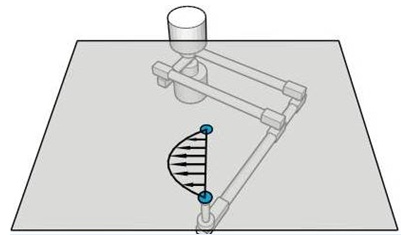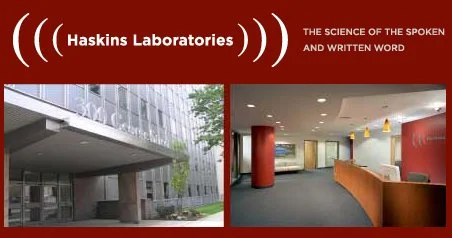Legacy: Decades of Discovery - 2000s
In 2000, Anne Fowler and Susan Brady launched the Early Reading Success (ERS) program, part of the Haskins Literacy Initiative, which promoted the science of teaching reading. The ERS program was a demonstration project examining the efficacy of professional development in reading instruction for teachers of children in kindergarten through second grade. The Mastering Reading Instruction program, which combined professional development with Haskins-trained mentors, was a continuation of ERS.
Christine Shadle joined Haskins to head up a project investigating the speech production goals for fricatives.
David Ostry and colleagues explore the neurological underpinning of motor control using a robot arm to influence jaw movement.
Laura Koenig and Jorge C. Lucero study the development of laryngeal and aerodynamic control in children's speech.
Douglas Whalen and Khalil Iskarous pioneered the pairing of ultrasound, used here to monitor articulators that cannot be seen, and Optotrak, an opto-electronic position-tracking device, used here to monitor visible articulators.
Donald Shankweiler and David Braze developed an eye movement laboratory that combines eye tracking data with brain activity measures for investigating reading processes in normal and disabled readers.
In March 2005, Haskins Laboratories moved to a new, state-of-the-art facility on the 9th floor of a commercial building at 300 George Street in New Haven, Connecticut. This provides about 25,000 square feet of office and lab space.
In 2008, Ken Pugh of Yale University was named President and Director of Research, succeeding Carol Fowler who remains at Haskins as a Senior Advisor.
In 2009, Haskins released a new Strategic Plan featuring new Birth-to-Five and Bilingualism initiatives.
• 1930s
• 1940s
• 2000s
• 2010s
• 2020s
• 1970s
• 1980s
• 1990s




